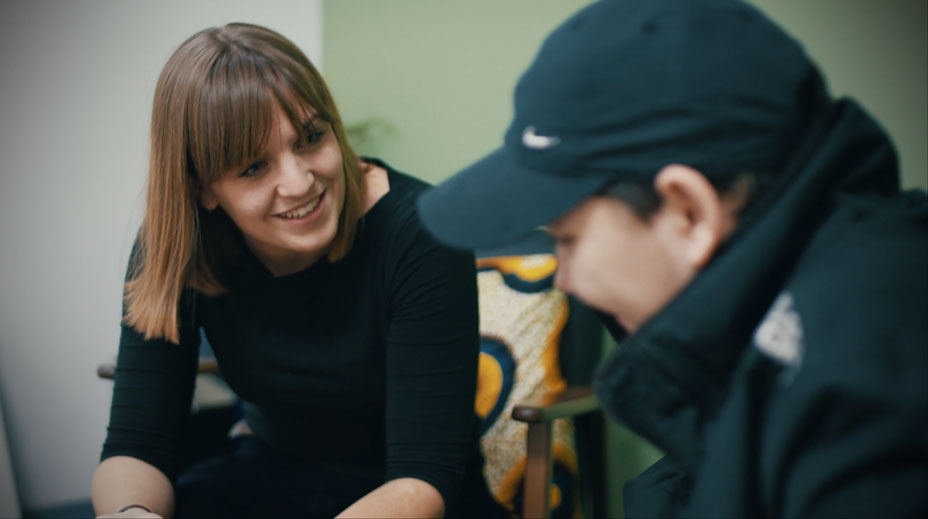10.07.2021 | Case Study
In practice: Family support in London and the East of England

Investment to build best-in-class family therapy teams transformed lives and saved money for councils across London and the East of England
Melissa (not her real name) was on the cusp of placing her adolescent son, Mark*, into care, due to his increasingly challenging behaviour. Mark had caused considerable damage to the family home, and had also been truanting for months. Melissa had even had Mark arrested several times and removed from their home.
However, what happened next offers hope to many other families who find themselves in similarly desperate situations, where placing a child in institutional care seems to be the only answer. This family is one of hundreds whose prospects have been transformed through support offered by family therapy programmes that have been operating across Essex, 10 London boroughs and, more recently, in Norfolk and Suffolk. Instead of being placed in care, Mark and his mother were offered intensive therapy that turned their lives around and made it possible for them to stay together – which also saved the council hundreds of thousands of pounds in potential residential care fees.
The therapy itself is not new; it is based on two well-established, evidence-based programmes. The success of the project lay in its flexibility to re-budget at various points in the delivery process. Brigitte Squire, the delivery’s clinical director, explains: “I have supervised the delivery of quality family therapy in a wide range of geographies around the country over the last 30 years, since these highly effective therapies were first introduced in the UK. They rely on extraordinary commitment from the most able therapists. If families receive it, some of the most difficult situations can be turned around. But the interventions represent a big ask of some of our finest therapists.
“Often, we have experienced funding problems with such programmes, which has left therapists under-resourced and exhausted, and families short of what they required. As a result, these therapies have not delivered to their full potential.”
Recruiting, retaining, and managing therapists isn’t easy. The work is intense and draining; teams are at risk of being understaffed because of turnover and recruitment delays. Resourcing gaps put more pressure on the remaining therapists, which is often reflected in increased sick leave. On paper, a team of therapists should support 40 families a year. In fact, they often help only 25 families because of under-staffing and poor utilisation.
“Thanks to flexible budgeting throughout the programme period, we ensured that there were enough therapists, well-supervised and with the
clinical support they needed”
For these projects, there were additional funds available to invest in extra therapist resource. Day to day, each of the teams had four full-time equivalent therapists. But an extra, unbudgeted one was also hired to ensure teams worked at full capacity. Senior clinical psychologists were also recruited to improve supervision, efficiency and overall cost-effectiveness.
“It was impossible for a single London supervisor to do the case management in an efficient way because we were covering five boroughs spread all over the city,” says Squire. “So we came to a ‘two supervisors’ model, which ensured that they retained good oversight.”
Finally, financial support was offered to ensure that therapists stayed until the project’s completion, rather than leaving for another job in the final year.
“Thanks to flexible budgeting throughout the programme period, we ensured that there were enough therapists, well supervised and with the clinical support they needed,” Squire explains.
“This strategy underpinned the success and sustainability of the programme. And the extra costs actually paid for themselves because we were able to help more families with better quality, more cost-effective therapy, which proved to be lower in price per family than traditionally contracted delivery.”
All in all, this flexible budgeting was hugely effective. It helped to build well-motivated, high-performing, award-winning teams, who achieved quality ratings and family satisfaction feedback that far exceeded comparable teams elsewhere. They worked with more families per team than any other service – about 50 per cent more than is usually achieved each year, in fact – without over-stretching individual therapists. And success rates rose dramatically: over three years, 90 per cent of the families remained together, compared to an expected 25-35 per cent without any sort of intervention.
“The extra costs actually paid for themselves… we were able to help more families with better-quality, more cost-effective therapy, which proved to be lower in price per family than traditionally contracted delivery”
There are currently more than 70,000 Looked-After Children in the UK, and it can cost over £200,000 a year to accommodate a child in residential care. However, even the directly attributable short-term cost-savings of these programmes realise at least three times as much benefit as their cost of delivery – and the broader benefits to government and society are many times greater.
So the value of this extra investment is clear. An independent evaluation found that these projects have already created over £200m of value to the public purse, of which over £50m is direct short-term cost avoidance to local children’s placements budgets. And they have only cost £20m to deliver.
The therapy certainly made a big difference to Mark and his mother, Melissa. “If I get into an argument now,” Mark says, “I can use them words. Outside, not just inside. And I just walk off, be a bigger man. And I get on with my teachers a lot more. When I started at the school, I didn’t really get on with them. Now I have a good relationship with them.”
Melissa feels grateful for what has been achieved: “If I hadn’t had the sessions,” she says, “I don’t think I’d have him right now – to the point not just of him being in care. He could be locked away by now if this hadn’t happened.”


